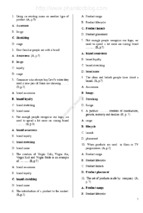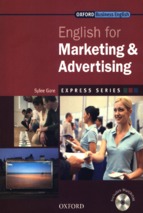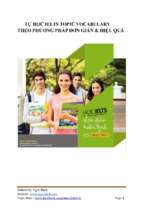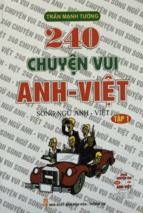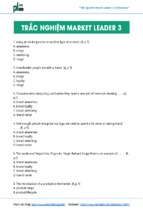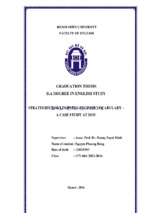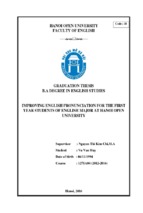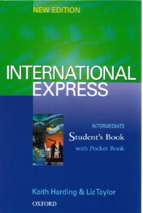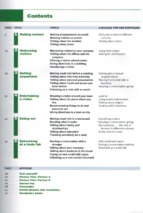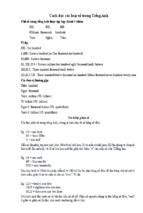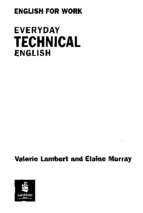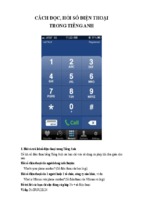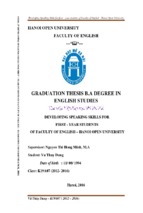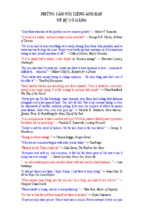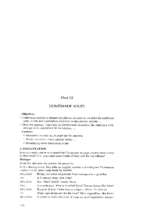Mô tả:
visit the link to get test
Website : https://1001dethi.com/ dt 0909265875 .thầy phúc
SÁCH STARTERS :
Cụ thể : 1 bộ sách Starters 9 cuốn +audio listening
Trọn gói : 50.000Đ.
SÁCH MOVERS :
Cụ thể : 1 bộ sách Movers 9 cuốn + audio listening
Trọn gói : 50.000Đ.
SÁCH FLYERS :
Cụ thể : 1 bộ sách Flyers 9 cuốn +audio listening
Trọn gói : 50.000Đ
SÁCH KET :
Cụ thể : 1 bộ sách KET 10 cuốn +audio listening
Trọn gói : 50.000Đ
SÁCH PET :
Cụ thể : 1 bộ sách PET 8 cuốn +audio listening
Trọn gói : 40.000Đ
SÁCH Longman New Real Toeic (Trọn bộ 3 cuốn RC,LC và Full)
Trọn gói : 30.000Đ
Dong Thap University
English2007B
Nguyễn Mạc Tư Khoa
METHODOLOGY 3 REVIEW
I. Planning
1. Long-term planning:
2. Short-term planning
It may involve work plans covering a week’s teaching as well as individual
lesson plans.
3. Work plans.
Work plans consist of the outlines of a sequence of lessons. They should
provide your teaching with continuity and coherence.
4. Lesson planning
It is essential preparation for teaching. It is a matter of deciding exactly
what you are going to teach, and how.
5. The factors affecting how teachers see and use a course book
1. Experience and training
2. Workload.
3. Institutional policy.
4. The quality of the course book.
6. Three common ways teachers use course books
1. As the course.
2. As the syllabus and main course of material.
3. As one small element in the course.
7. What course books can offer?
1. The syllabus.
2. Language presentation material.
3. Language practice material.
4. Skills development material.
5. A sequence of work.
6. Additional material.
a. Pronunciation material.
b. Grammar summaries.
c. Teacher’s notes.
d. Supplementary material.
e. Tests.
8. What a course book cannot provide?
1. Most course books are written for international distribution.
2. The authors probably do not know your country or your language, let
alone your teaching institution and learners.
3. Course books are probably written by authors who do not know your
specific school or learners.
4. A course book cannot have a personal relationship with the learners.
9. Preparing to use a course book
1. The syllabus
2. The layout
3. The proposed methodology and procedures
4. The supplementary material
10. Exploiting a course book
1. Using language presentation material.
2. Using language practice material.
3. Using skills development material.
II. Language learning games
1. The value of play.
Through games, learners practice and internalize vocab., grammar and
structures. Motivation is enhanced. An added benefit is that the learners’
attentions on the message, not on the language.
2. Numbers and Letters games.
1. Bingo
2. Secret messages
3. Prices
4. Count again
3. Word games.
1. Word sets
2. Word building.
3. My shopping basket.
4. Sound chains.
5. Letters chains.
4. Speaking games.
1. What’s my line?
2. Animal, vegetable and mineral?
3. Chain story.
III.
Class management
1. Instruction techniques.
1. Step-by-step (Feed-in Approach) The teacher gives the students one
instruction at a time, not a list of instructions all together.
2. Say, Do, Check (Three-Step Instruction) The teacher follows three
steps for each instruction. First, he/she says the instruction, then gets the
students to do it, then checks that they’ve done it correctly before going
on to the next instruction.
3. Show Don’t Tell (Model it/ Demonstration) The teacher doesn’t talk
about what the students must do. Instead, he/she shows them what to do;
he/she becomes a student and gives demonstration.
4. Recall (Tell Me Again/ Say It Again) The teacher checks that the
students understand everything by saying.
2. Guidelines for giving effective instructions.
1. KISS- Keep It Short and Simple.
2. Be clear and be confident.
3. Always check students have understood by using checking questions.
Do not ask “Do you understand?” or “Ok”.
4. Make sure all the students can see and hear you.
5. Maintain eye contact with the class.
6. Make sure students are silent when you give your instructions.
3. Managing pair and group work.
1. Disadvantages.
a. The learners may be considered about the task and not do it probably.
b. The noise level may rise.
c. The learners may start talking about whatever they like in their first language.
d. The learners may make and repeat many errors.
e. You may not be able to get the learners’ attention again and lose
control of the class.
2. Advantages.
a. Variety and dynamism.
b. An enormous increase in individual practice.
c. Low-stress private practice.
d. Opportunities to develop learner autonomy.
e. Interaction with peers.
3. Other techniques and strategies that can make pair and group work as
trouble-free and profitable as possible are:
a. Give clear instructions.
b. Monitor the activity.
c. Train the learners to stop talking when you give a certain signal.
d. Check on the task after the pairs or groups have completed it.
e. After the pair or group work, deal with major errors you noted.
f. Tell particularly noisy, uncooperative classes you will do pair or
group work with them only if they keep their voices down and
follow your instructions.
4. Teacher and learner roles.
At different t times, you need to:
1. Present new information
2. Organize and facilitate lockstep fluency and skills activities.
3. Monitor individual, pair, or group activities.
4. Inform the learners about their progress.
At different times, the learners need to:
1. Attend to information you give them, imitate your models, and try to
do exactly as you indicate.
2. Volunteer original ideas and ask relevant questions.
3. Work with other learners, solving problems co-0peratively.
4. Work independently in class or at home, taking full responsibility for
their own performance and learning.
5. Discipline- Basic recommendations.
1. Plan lessons, and include varied activities and interactions that keep
the learners busy.
2. Use topics and activities that you think will be interesting and
enjoyable for the learners.
3. Motivate the learners by focusing on what they do satisfactorily or
well more than on what they do badly.
4. Try to create a sense of community in the group.
5. Be fair to all the learners.
6. Show that you respect and are interested in all the learners as people.
IV.Testing and evaluation.
1. Why should the teacher give regular test to the class?
1. They tell the teacher what the students can and cannot do, how
successful the teaching has been, and they show what areas need to be
taught in the future.
2. They tell the students how well they are progressing, and where they
need to focus their attention as learners.
3. Regular tests also encourage students to take their learning seriously,
and give them a series of definite goals to aim towards.
2. What is the purpose of English language tests?
The purpose of English language tests is to gather reliable evidence of what
learners can do in English and what they know of the language.
1. Placement test.
To place new students in appropriate course or level. (A test to find out
level of students at the beginning of a year).
2. Diagnostic test.
To find out learners’ strengths and weaknesses at the start of a course.
3. Progress test.
A test that is done regularly to check students’ progress.
4. Course test.
To check how well learners have done over a whole course.
5. Proficiency test.
To determine learners’ levels in relation to generally accepted standards.
6. Achievement test.
A test to evaluate students levels of study at the end of year.
7. Selection test.
A test to select those best suited to the course/level being run.
3. What is content validity test?
It means that the grammar, vocab., and functional content of a test should
be carefully selected on the basic of the course syllabus.
4. What is construct validity test?
It means that the exercises and tasks in a test should be similar to those
used in the course and correspond to general approach of the course.
5. A specific test exercise or task is normally reliable when:
1. The instructions are clear and unambiguous for all the learners.
2. The exercise or task controls to some extent how learners respond.
3. There are no errors in the test.
6. Reliability is reduced if:
1. One group is given much more time than another.
2. One group is helped by teacher and another is not.
3. Invigilation is strict in one group and not in another.
7. What are recognition tests?
Recognition tests are those in which students have to show they know
something by recognizing the correct answer that is given.
8. What are reproduction tests?
Reproduction tests are those in which student have to show they know
something by producing the correct answer(s) for themselves.
9. Guidelines for writing test items.
1. For the whole test.
a. Test what you teach.
b. Don’t copy the test texts straight from the book.
c. Copy the instructions from the book.
d. Make sure the test ‘covers’ the book.
e. Make sure level of difficulty the level of the average student.
f. Make sure all the test texts are grammatically correct.
g. Allow enough time to develop the test.
2. Multiple choice/True False.
a. Each test item should test only one thing.
b. Avoid grammatical clues in the options.
c. There must be only one right answer in each test item.
d. All the choices should be the same part of speech or function.
e. The options should exist as correct English.
3. Gap-fill.
a. There should be only one gap per sentence.
b. There should be no gap in the first sentence.
c. Avoid non-language clues.
d. Make sure that each gap can only be filled by one of the given
words.
10. Evaluating course.
Course can be evaluated by using learners’ test results, questionnaires given
to learners and teachers, and class observation. Criteria for the evaluation of
course syllabuses and course materials can also be useful, as well as criteria
for the evaluation of tests.
V. Planning lesson and Teaching practice
1. The benefit of planning.
Proper lesson plans are essential. You will be more relaxed and confident if
you follow a clear plan. The plan enables you to improve your timing.
2. Steps in planning he lessons.
1. Decide the aim of the lesson.
2. Write the objectives.
3. Select the key language.
4. Choose your approach.
3. Ask yourselves these questions.
1. What should the learners know after studying this?
2. What should the learners be able to do?
3. In what ways should the learners be able to behave differently after
studying the text?
4. There are 4 types of learning objectives, relating to:
1. Memory.
2. Attitudes.
3. Understanding.
4. Acting.
5. Avoid words.
1. Know.
2. Understand.
3. Really know.
4. Really understand.
5. Believe.
6. Be aware of
6. Use words.
1. State.
2. Describe.
3. Apply.
4. Identify.
5. List.
6. Match.
7. Aims of TP.
1. Aims for the teacher.
1. To practice new techniques/methodology.
2. To find out their strengths and weaknesses.
3. To develop new skills and ideas to use with their own classes.
4. To develop your own teaching style.
5. To get used to being observed.
6. To develop a sense of responsibility to your students.
7. To encourage development of criteria for self-evaluation and selfawareness.
2. Aims for the TP group.
1. To learn from each other’s strengths and weaknesses.
2. To learn how to listen to and observe each other.
3. To be able to help and guide teachers in their own school.
4. To provide the teacher with the opportunity to have their teaching
evaluated and constructively criticized.
8. Responsibility and expectation in TP.
1. Before TP.
1. Prepare the lesson together in TP groups.
2. Prepare visuals and posters.
3. Always run through your lesson plan with the TP group.
4. Give a lesson plan handout to your supervisor and other members in
your group the day before the lesson.
2. During TP.
1. Take an interest in the lesson.
2. Behave in a responsible manner- keep silent and follow the lesson.
3. Take notes of the lesson.
4. Be on time.
5. Show an interest in the lesson.
3. After Tp.
1. Arrive for TP feedback as a group promptly.
2. Make notes of relevant and important points made by others.
3. Participate actively in the feedback session.
4. Maintain an interest throughout the feedback.
5. Provide useful and constructive feedback.
The End!...
- Xem thêm -

